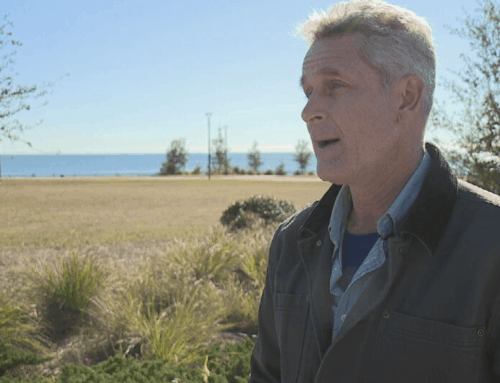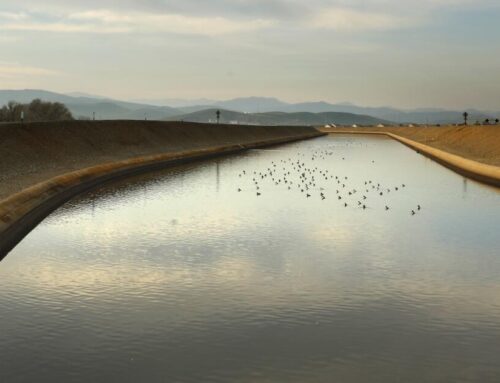Q&A: How Southeast Asia can seize the renewable energy opportunity
May 1, 2025
Southeast Asia stands at a crossroads in its energy transition. Rapid economic growth, volatile fossil fuel markets and intensifying climate risks are pushing governments to rethink their energy strategies. Rising trade tensions between China and the US are also disrupting global supply chains and markets, adding urgency for countries in the region to secure more resilient, locally anchored energy systems. And now the US has slapped massive tariffs on solar products being exported from Southeast Asia.
To understand the opportunities and challenges facing the region, Dialogue Earth spoke with Grant Hauber, strategic energy finance advisor for Asia at the Institute for Energy Economics and Financial Analysis (IEEFA). In this wide-ranging interview, Hauber explains why renewable energy is an economic imperative, how Southeast Asia can localise its clean energy supply chains and what policies are urgently needed to unlock investment.
Dialogue Earth: What can Southeast Asia learn from China’s approach to scaling up renewables?
Grant Hauber: China has met incremental demand growth in electricity from renewables, not fossil fuels, because it’s been able to add this capacity very quickly. In 2024, China added [the equivalent of] over 750 megawatts (MW) of solar per day, showing just how dynamic renewable energy could be in any country’s plans.
Vietnam is often cited as a success story in renewables. What lessons can other countries learn?
On April 15, 2025, Vietnam revised its Power Development Plan 8, greatly increasing solar and onshore wind in their mix because they’re still experiencing huge electricity demand growth due to high economic growth. However, the country has struggled to add fossil-based generation capacity.
Between 2019 and 2021, Vietnam had a feed-in tariff programme for solar and wind, which saw Vietnam go from nowhere on the renewables map to one of the top markets in the world in just two years – two-thirds of this investment came from homegrown industrial conglomerates and companies, funded domestically with no foreign borrowing. For most countries, that combination of localisation is the holy grail.
Vietnam took a less than two-year-old national energy plan and overhauled it … prioritising solar and wind to 2030 because [they said] ‘we can build that in six-to-nine months and keep up with the pace of demand growth while we figure out what to do with gas’.
How do renewable investments compare with fossil fuel projects economically?
Renewables are a one-time upfront expense. Once you’ve done the capital purchase, it’s locked in for the life of the project. Your ongoing operating costs are minimal. By comparison, a gas-fired power plant requires importing equipment and has ongoing fuel costs. Adding a similar amount of gas-fired generation capacity as the government has targeted for renewables would take at least four to five years to complete, at triple the investment cost – and have the tax of ongoing gas costs to cover. Thus, the government’s renewable-focused strategy makes huge sense.
Every megawatt you can substitute renewable for fossil fuel, you’re protecting the economy. You’re sheltering it from foreign exchange fluctuations, interest rate fluctuations and commodity price fluctuations.
Renewable energy is anti-volatility. It’s like a pension fund or an insurance premium.
Renewable energy is anti-volatility. It’s like a pension fund or an insurance premium – fixed cost for a very long period with no volatility to trade off. It’s perfect for economies trying to decouple from volatility.
What about the supply chain side — can Southeast Asia build a real industrial base around renewables?
The solar panel in most Southeast Asian countries accounts for only about 25% of the investment cost of a completed solar farm – 75% is all the other stuff – racking systems, cabling, transformers, control systems, labour and logistics.
Indonesia, despite being near the equator and despite having attracted solar industry investment in solar panels, does not seem focused on deploying solar to their own benefit. Only about 0.2% of their power consumption comes from solar, even though the government has set lofty renewable targets for the future. Indonesian industry could be focusing immediately on the full range of products needed to deliver solar farms – not just panels, where China has a price competitive edge – but all of the other 75% of components needed to make solar plants function. It’s a huge opportunity.
For offshore wind, supply chain opportunities could be even higher because it taps into so many industries. South Korea, currently a laggard on offshore wind, has a world-leading shipbuilding industry that could fabricate steel towers, floating structures and specialised ships to install them. It manufactures turbine blades for other countries, as well as cabling and electrical control systems.
South Korea can build all the specialised vessels required to get offshore wind components out into the ocean and installed – they have all those industries domestically.
These industries exist, but they’re not programmed for offshore wind – they’re focused on other things. If you could turn the might of the Korean industrial complex toward this, with the amount of power they need, it’s a sure thing, not an experiment.
As of right now, Korea could supply that stuff for the entire region. Japan could do the same, but they’ve ignored that opportunity.
What’s more, Korean and Japanese companies own steel fabrication yards in many Southeast Asian countries. That means that wind supply chains could be mobilised all over the Asia Pacific to regional benefit.
Grid infrastructure often gets overlooked. Why is it so important?
Regardless of the source of electricity – nuclear, gas, or renewables – all our countries need to modernise their grids because the only way you get new energy to a customer is through the grid.
While utilities are working on their larger systems, distributed rooftop solar can help support the grid because you don’t have concentrated loads overloading parts of the system, but you need modern metering, measuring and control systems – small tech additions, not a massive overhaul.
No one’s doing [grid improvements] systematically yet because it’s not sexy. It’s easier to cut a ribbon at a big coal-fired power plant than to add smart meters or modify substations for greater functionality.
Except in China. China directs subsidised capital and costs all along the supply and deployment chain – incentives no other country has replicated. But all of those elements you need to improve your grid and reliability you can buy dirt cheap and transform your energy economy.
What policy and investment steps are most urgent?
It’s all about clearing the way to investable projects that can mobilise the massive amounts of private capital waiting to invest: reducing red tape, securing land, right-of-way access to transmission lines, clear permitting processes and standardised bidding procedures.
Each country needs what I call a ‘tendering factory’: producing project after project reliably and consistently as part of a plan to diversify the national energy portfolio and save it from volatility.
If Indonesia ramps up solar on a gigawatts per year basis, with a clear implementation pathway, it creates a domestic market for solar manufacturers, giving certainty to industries investing in racking systems, cabling, or panels; they can stop importing and start making it locally.
The world is heading toward an electrified state – more EVs, heat pumps, and industrial processes. It makes sense to invest in the systems that supply the grid and make energy planning choices that avoid borrowing foreign currency.
Beyond economics, what social benefits can renewables deliver?
Solar jobs are geographically distributed, not concentrated at a mine or power plant. You can create four to five times the number of jobs across all skill levels – from computer engineers designing control systems to local people tending goats to maintain vegetation around solar farms.
There’s a democratisation of energy potential – no other substitute energy source offers this geographic distribution and equality.
There’s a democratisation of energy potential – no other substitute energy source offers this geographic distribution and equality.
What do you see as the major barriers holding the region back?
People don’t react until they start feeling pain. Japan appears to have forgotten the principle of sunk costs. They’ve invested so much in vertically integrated fossil fuel supply chains, that they cannot stop using them. But they’re still paying market rates in US dollars for the fuel they are forced to import – they’re ignoring domestic industries that could marshal an offshore wind revolution [despite having perhaps the world’s best offshore wind speeds].
Any final thoughts on South Asia, particularly as the region navigates growing energy challenges and opportunities?
Pakistan is a miracle – 95% of its solar is individual homeowner or business owner investments, currently 19 GW of rooftop installations installed over just the past few years, not arising from government policy. The grid failed them; power quality and availability are poor and costs are very high. With this organic rooftop revolution, grid-based demand fell 20% in three years, and now they’re buying cheap Chinese batteries to go off-grid entirely.
Pakistan shows how fast things can change with solar – it’s good for consumers but potentially bad for the grid’s financial health. Indonesia’s planners look at that and say: ‘This could happen to us,’ so they prevent solar additions rather than figure out how to leverage them [to everyone’s benefit].
Search
RECENT PRESS RELEASES
Related Post





